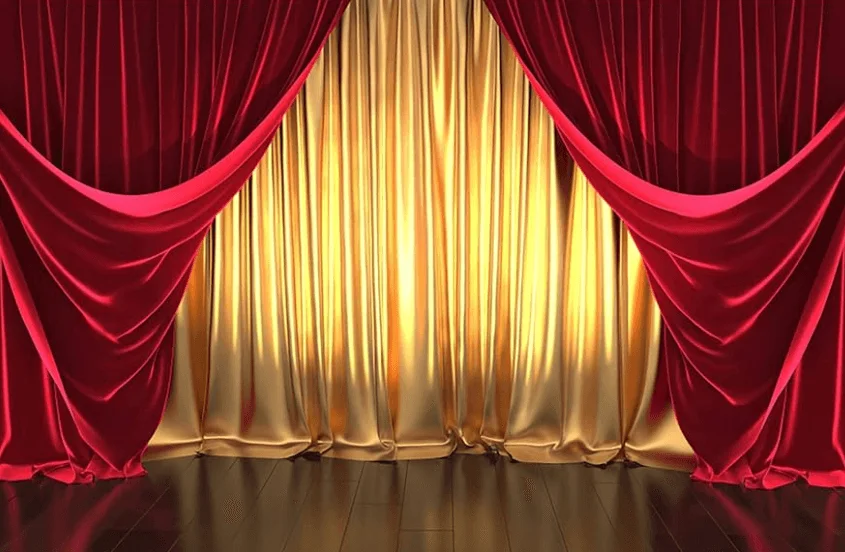
One of the first things I always notice when stepping into an auditorium, school hall, or theatre isn’t the stage, the lights, or even the seats—it’s the curtains. Maybe it’s just me, but there’s something about those grand drapes that immediately sets the tone. They’re not just hanging fabric; they shape the mood, manage the atmosphere, and play a bigger role in performances than most people realise.
Whether you’re setting up a stage for a school, a local theatre, or a multi-purpose venue, understanding how stage curtains work can really help you create a more polished and functional space. Based on what I’ve seen and learned over the years, here’s a simple guide to help you get started.
Table of Contents
ToggleWhat Exactly Are Stage Curtains?
Stage curtains are those large fabric panels that you see covering the stage before a show starts, during scene changes, or after the final bow. But they’re not just for show. Curtains help hide props and actors before their big moment, block distractions, improve the acoustics, and add to the overall drama of the performance.
They come in all sorts of materials—some plush and heavy, like velvet, while others are light and sheer, designed for special effects. Some are purely functional, while others are made to impress.
Different Types of Stage Curtains
Over time, I’ve come across many types of stage curtains. Each has a specific role to play, and knowing which one to use can make a big difference.
1. Front Curtain (Grand Drape or Proscenium Curtain):
This is the big one that separates the audience from the stage when the show isn’t on. It’s often made of rich fabrics and opens either from the middle or in a fancy gathered style. It’s the curtain that gets all the attention—and rightfully so.
2. Legs and Borders:
Legs are long and narrow curtains that hang on the sides, hiding the backstage chaos. Borders are short and wide, running across the top to cover lights and other equipment. Together, they frame the stage neatly.
3. Backdrops and Cycloramas:
These cover the back of the stage and are often used to project scenes or lighting effects. Usually light in colour, they’re perfect for setting the mood or helping with transitions.
4. Traveller Curtains:
These curtains split in the middle and slide across the stage from side to side. I’ve seen them work great in venues that need to divide space or change scenes quickly.
5. Scrims:
Scrims are semi-transparent curtains that can appear solid or invisible, depending on how they’re lit. They’re amazing for creating dreamy or ghost-like effects.
What to Think About When Choosing Stage Curtains
It’s not just about picking a nice colour. A lot goes into choosing the right curtain. Here’s what I’ve learned to keep in mind:
1. Material Matters
Always go for fabrics that are fire-resistant—especially velour or muslin if you want that classic theatre look. Good fabric also improves sound and looks more professional on stage.
2. Size and Fit
Measure your stage properly. Nothing looks more off than a curtain that’s too short or too narrow. Many companies can make custom sizes, which is worth considering.
3. Style and Colour
Red and black are traditional, but I’ve seen everything from navy blue to forest green. Choose a colour that works with your space. Pleats and fullness also affect how the curtain hangs and moves.
4. How It Works
Manual curtain tracks work fine for small stages. But if you’re running a larger setup or hosting regular shows, investing in a motorised system can save a lot of hassle.
5. Acoustic Value
Heavier curtains can help control sound, especially in echoey halls. If your venue has poor acoustics, the right curtain fabric can help fix that.
6. Cleaning and Safety
Stage curtains aren’t something you can just hang and forget. Because they’re made from flame-retardant materials, regular professional cleaning is needed. Over time, dust builds up, and the flame-retardant treatment wears off.
Certain venues plan the re-treatment every year or two in order to maintain their compliance with fire safety standards. Depending on your situation, it’s surely something worthy of checking under your lists.
Where to Get Them
If you’re new to this, I recommend finding a company that offers more than just the curtains. Seek out one that offers on-site consultation, design recommendations, installation, and even post-sale assistance. The most effective configurations I’ve seen were always conducted by individuals who actually understood what they were doing—not simply hawking fabric but assisting you in creating the proper ambiance on stage.
Final Thoughts
Stage curtains are a small component, but they can actually make or break the mood of a performing space. From creating drama and flair to concealing distractions and enhancing acoustics, they’re an integral element in what makes a stage effective.
If you’re organizing a performance area, don’t forget about the curtains. Believe me, they don’t just hang there for show.
